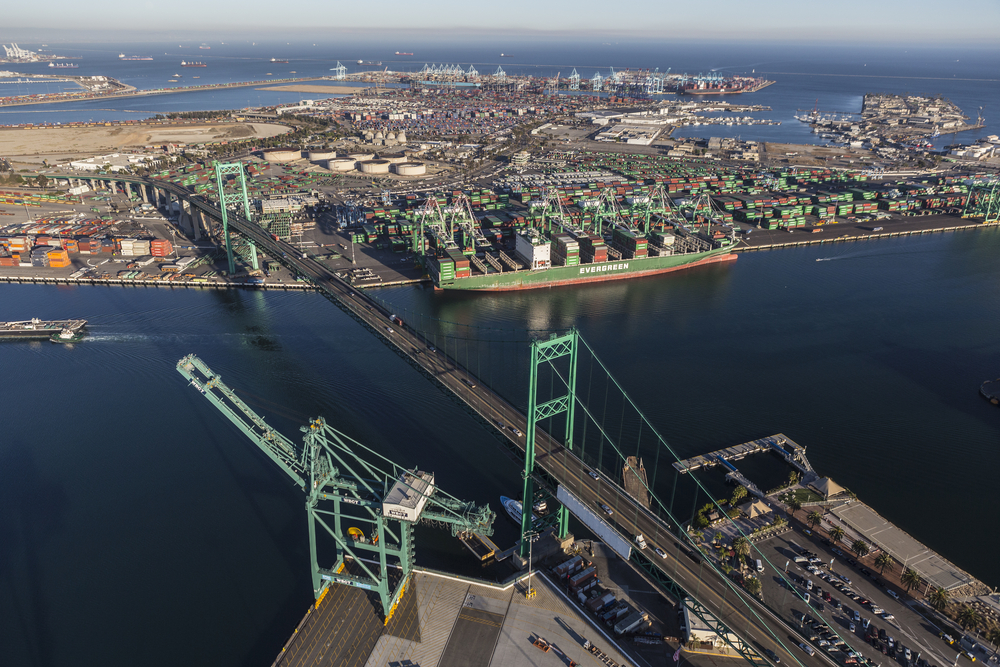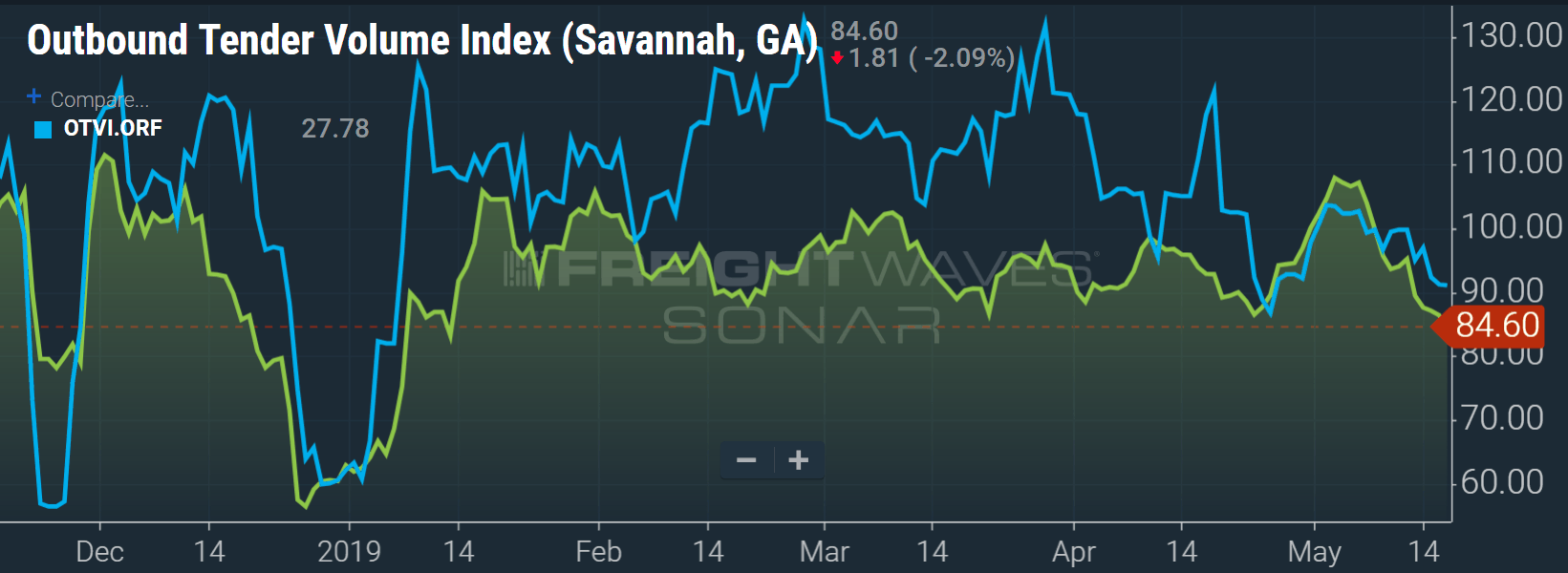
Image: Shutterstock
Guest post by FreightWaves’ Zach Strickland
After lulling the world economy into a false sense of security, U.S. government decided to raise tariffs on $300 billion of Chinese goods to as much as 25% last week. The list of goods is extensive, covering sneakers to coffee makers. The threat of increasing tariffs completely changed the freight market landscape in 2018 as shippers rushed to import as many items as possible to get in front of any looming tariffs. As a result, port city freight volumes surged in the 4th quarter of 2018 and lasted into the 2nd quarter of 2019. This week freight volumes dropped sharply out of many of these areas, with Los Angeles being the biggest loser.

After a booming first four months of 2019 in Los Angeles, volumes plummet after tariff increase faster than trucks can exit the market. (SONAR Outbound Tender Volume Index, Trucks-in-Market – Los Angeles OTVI.LAX, TRUK.LAX)
Los Angeles outbound freight volumes averaged 65% higher YoY in the first four months of 2019. Over the last few days those volumes dropped over 25% out of the country’s largest port market to hit their lowest level since the 2019 holiday period when freight volumes are typically at their lowest levels.

Truck activity fell alongside volumes as illustrated by the Trucks-in-Market Index (SONAR: TRUK.LAX)
The anomaly was not isolated to contracted freight volumes, but it also showed up in trucking activity in FreightWaves proprietary Trucks-in-Market Index (TRUK) that is derived from ELD activity. TRUK is an index based on the number of trucks that end their day in a market any given day. The base value is 100 with a base date of April 1st 2018, the ELD hard mandate date.
Over the last seven days the TRUK value for the L.A. market has averaged almost 6% lower than the previous week. The drop does not line up precisely with the declining volume, indicating the market will have an oversupply situation unless volumes recover.
The tariff pull-forward has altered the freight market landscape by shifting freight volumes to the West coast in a time when fleets are normally not positioned in the area. The months of January to late March are normally dead periods for the L.A. market for two reasons:
First, inbound container shipments slow after the holidays as shippers evaluate how much inventory will be needed for the coming year. Also demand slackens in the colder months. Second, produce movements come from different areas, as Yuma, Arizona replaces the Salinas valley for lettuce production and other Mediterranean vegetables, along with most other produce coming from outside the U.S.
The recent development of freight volumes taking a sharp dive may leave many carriers stranded in a market with little option of ways to get off the west coast as volumes start to increase in other areas of the country. The uncertain economic environment is causing shippers to constantly re-evaluate their supply chains and consequently creating havoc for carriers in terms of network design. The question is, will we see a repeat of 2018 as concerns over additional tariffs continue as the supposed “trade war” escalates. Warehouses are at capacity in many spots, and the trade-off between storage and maritime shipping costs versus potential tariffs have become less clear.

Freight volumes are declining out of Savannah and Norfolk as well. (Image: SONAR OTVI.SAV, OTVI.ORF)
Other large port markets like Savannah, Georgia and Norfolk, Virginia have also seen declining freight volumes this week, but none as significant as L.A. With the potential for more tariffs looming, there could be another surge of freight on its way.
This drop may only be a temporary, but the sudden change will still be felt by carriers who have grown accustomed to consistent outbound volumes in these areas. The freight market may be in for a bumpy ride until tensions between China and the U.S. soften.






















